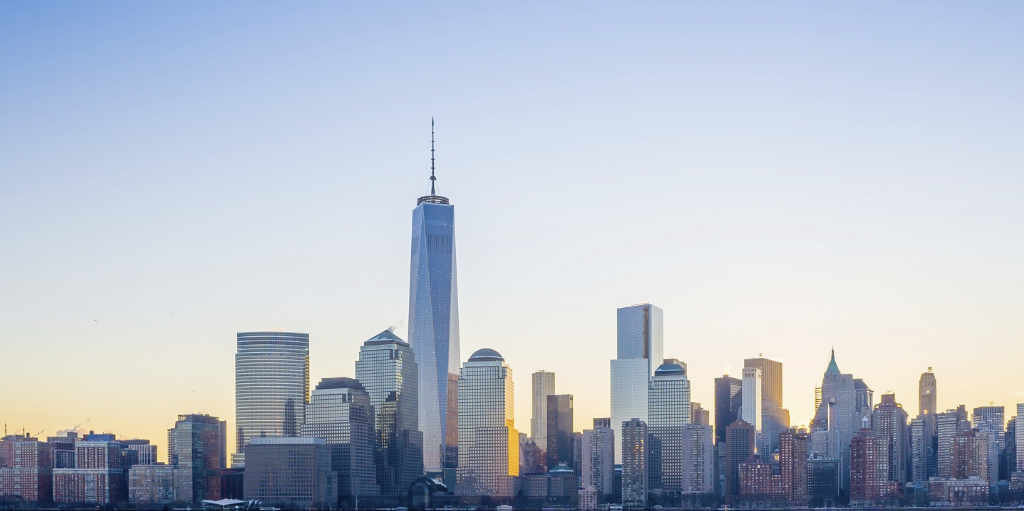
Shapes and Skyscrapers
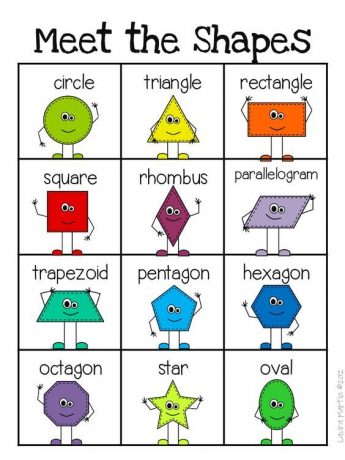
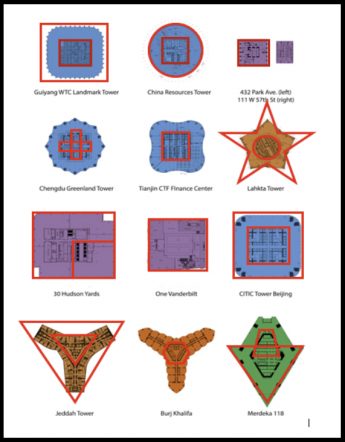
A shape is a two dimensional figure, with length and width. Some common shapes you may know are geometric, such as circles, triangles, squares, and rectangles. Shapes are found all around us, from buildings to clouds. Shapes can appear naturally, such as on the shell of a turtle or inside a flower. They can also be created or built. Take a look at a stop sign. What shape do you see? If you guessed octagon, you are correct! Shapes make up our built world, which includes buildings, parks, and bridges. Shapes can be seen in the first design of a skyscraper on blueprints, the plan for the building, and after the skyscraper is built. Skyscrapers have a lot of unique shapes from the outside of the building to the floors inside.
New York City is a treasure chest of hidden shapes because the city has many skyscrapers! Our exercises are perfect for elementary to middle school students and range from simple to complex shapes. We introduce concepts about skylines, floor plans, and blue-prints that make understanding shapes in architecture easier. Skyscrapers can serve as examples in mathematics, science, and history. Our "brain games" focus on dimensions and patterns on the interior and exterior of buildings. Beginning with The Skyscraper Museum’s home in NYC we then turn to some of the tallest skyscrapers in the world. By comparing skyscrapers across time, from the 1920s-2020, and across the globe, our activities encourage students to recognize patterns across our built environment. Let’s start our treasure hunt for shapes on the New York City skyline!
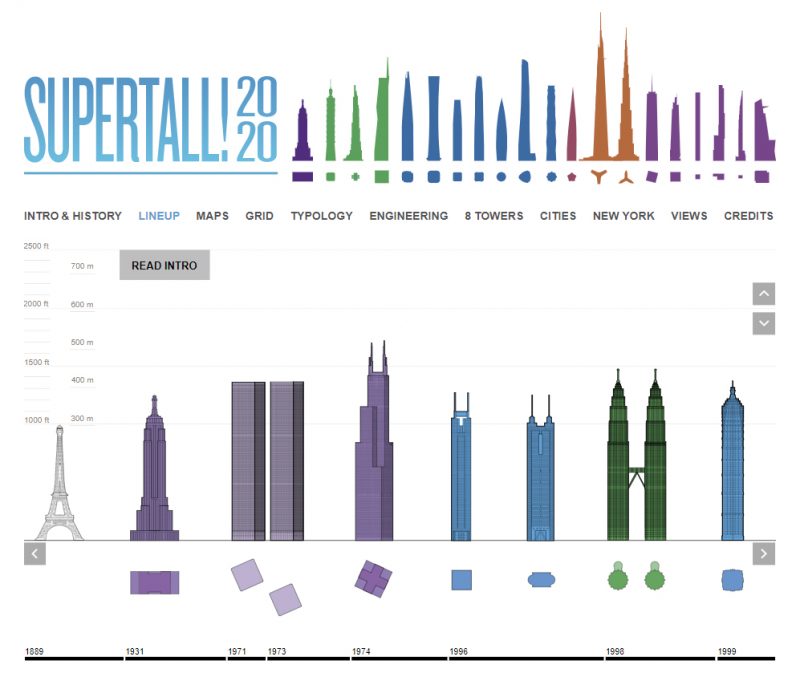
Visit our Supertall website to discover more details about these skyscrapers and to find more shapes in their floor plans and silhouettes!
Exercise 1: Shapes Scavenger Hunt
In this exercise, we will discover different shapes in the skyscrapers on our Supertall Lineup. Supertall skyscrapers are those that are at least 1,250 feet or 380 meters. For the following supertall buildings, try to find circles, semi-circles, squares, rectangles, triangles or other polygons in their designs and floor plans. For more pictures, please click the link and select the skyscraper on the lineup.
Fun Fact: The Burj Khalifa was inspired by a flower! Remember we said shapes can be found in our natural and built world? This tower, designed by architect Adrian Smith, looks like a regional desert flower named the Hymenocallis or Spider Lilly. Architects not only design skyscrapers from abstract shapes, but also from shapes inside nature!
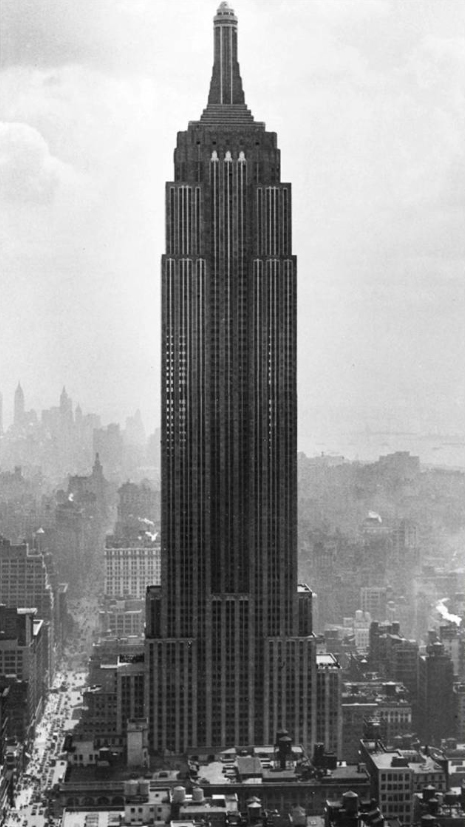
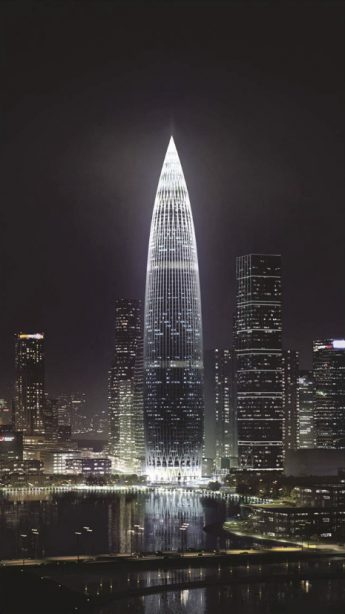

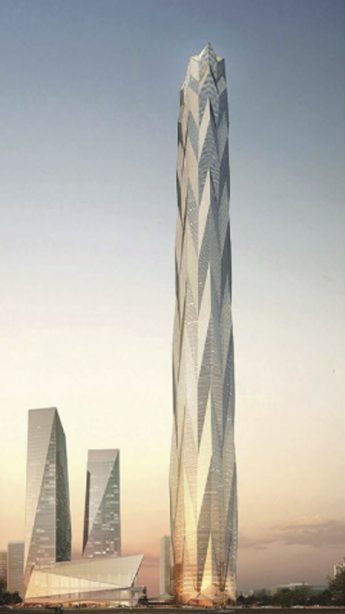
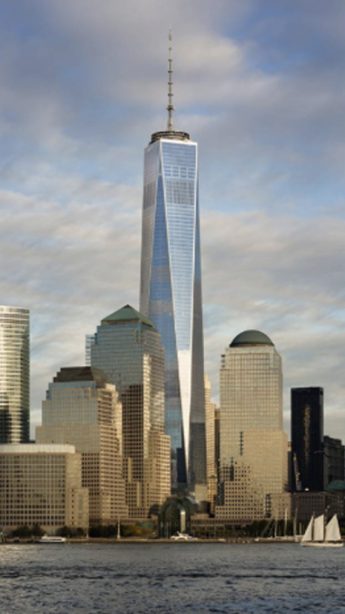
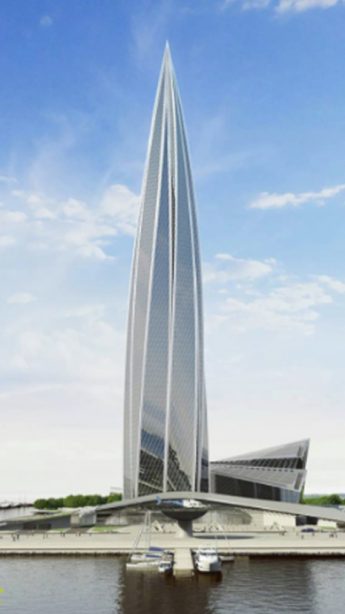
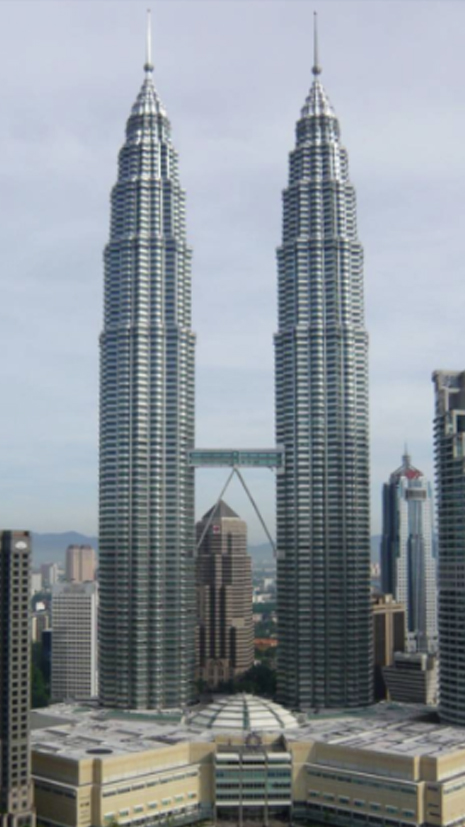
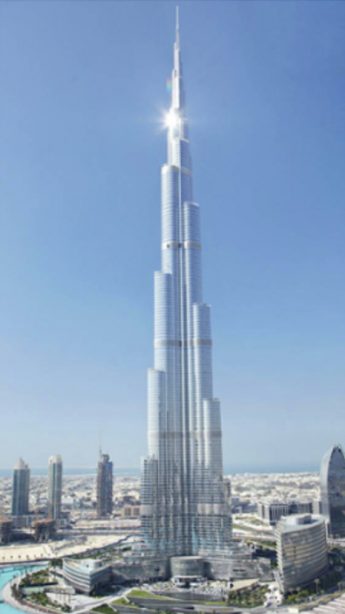
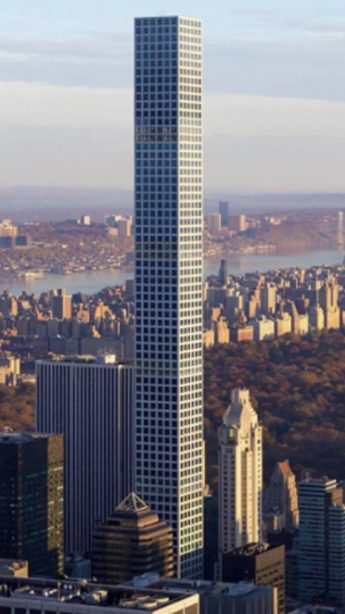
Exercise 2: Shapes Scavenger Hunt 2
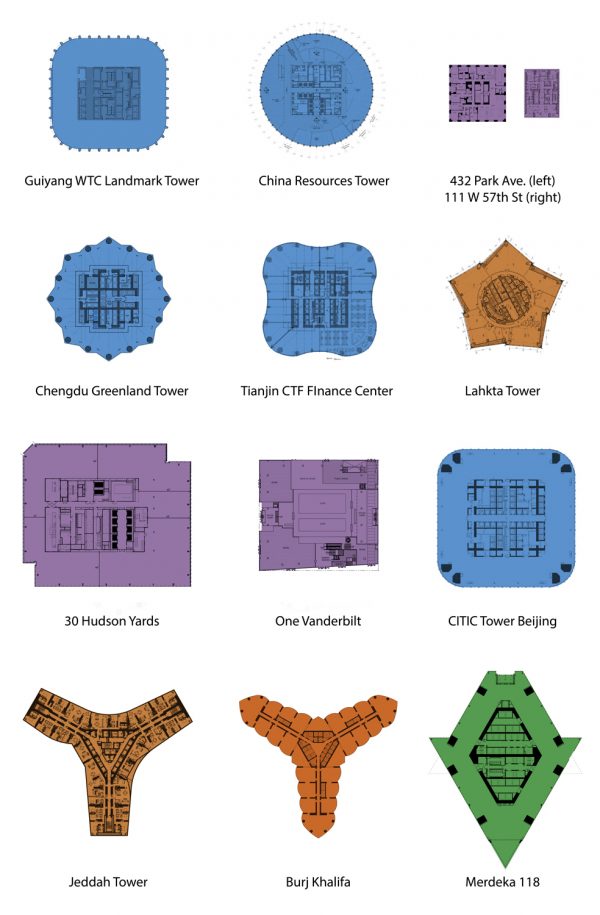
A lot of shapes can be found in the floor plans of skyscrapers. Each of these shapes represents the base and the inside of a building. A floor plan is a representation of one story or floor of a building. Looking at these examples, the floor plan of the Lakhta Tower looks like a star with a circle inside. That means the outside shape of the Lakhta Tower appears like a star if you look down at the building from up in the air, from an aerial view. The circle represents the shape of one floor inside of the building. Each floor of a skyscraper has a floor plan that represents where the rooms are located.
Imagine what your house or apartment building would look like if you took a photograph of it from a “bird’s eye view,” from high up in the sky. Your home would probably be shaped like a square or rectangle. Now pretend you wanted to slice up your home by floors. The layout of each floor, where your bedroom, bathroom, and kitchen are laid out would be represented in a floor plan. Depending on how many floors are in your building, your floor plan may have many floors! The images to the left show only one floor of each building.
Keeping in mind what you learned in the previous exercises, how many shapes can you find in these floor plans? Some plans are simple - either a circle or a square. Others are much more complex! See how many simple shapes you can find in a floor plan shaped like a star or a rectangle with rounded corners, especially if you start overlapping shapes on top of each other!
Now that you’ve found all the shapes, let’s match the floor plans to the buildings above! What are some of the most popular floor plan shapes? Here are some examples, but there are more!

Exercise 3: Shapes in the Skyline
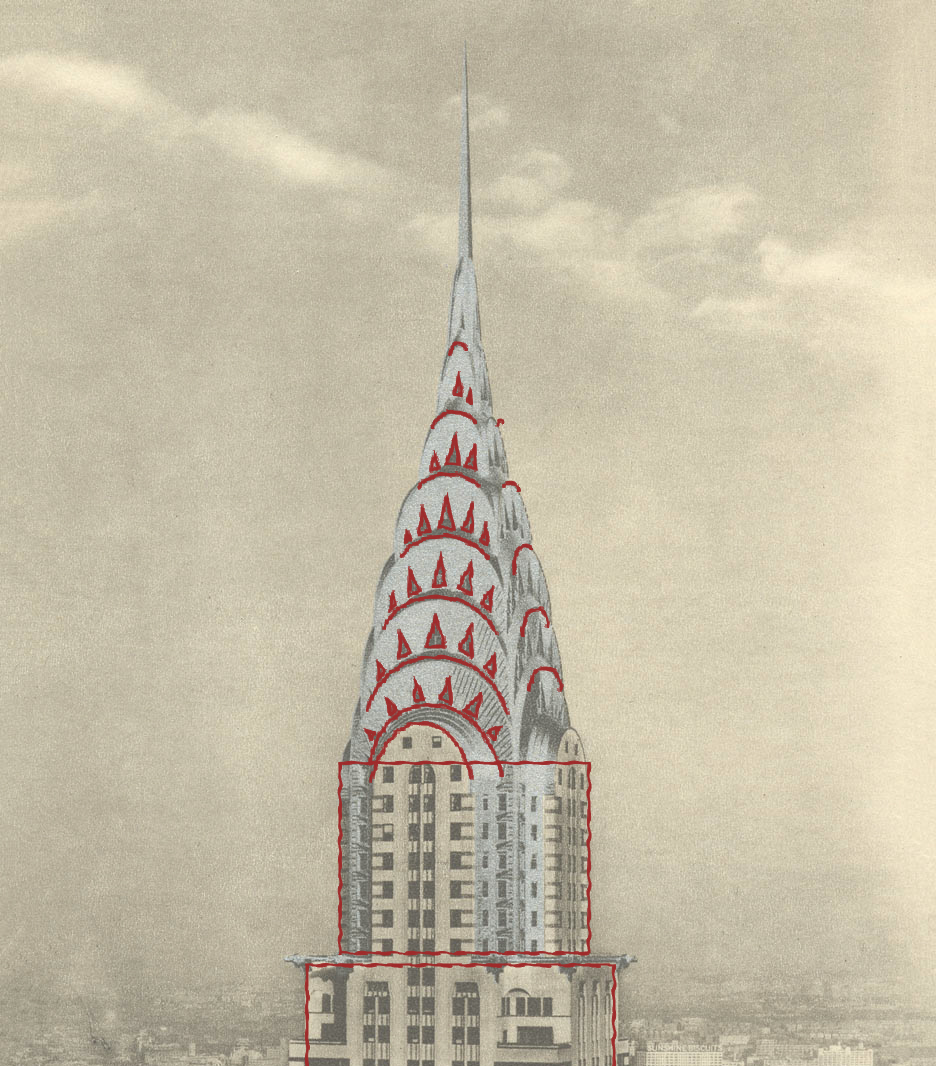
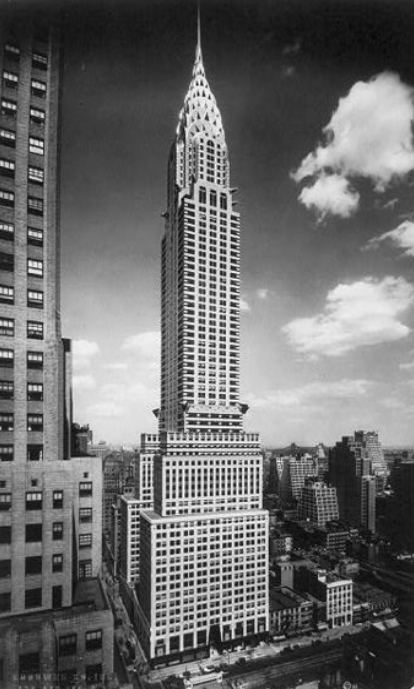
Every building is made up of shapes! For example, look at teh Chrysler Building — especially its top, called the "vertex." We've traced a few shapes over this image of the vertex to help show you how it's actually a pyramid made up of semi-circles and triangle windows! But there are many more shapes in this image. Can you find more?
Using the example of the vertex here, use the full-length image of the Chrysler Building below and find as many shapes as you can. Tip: print out the photograph and draw over it. More information on the Chrysler Building can be found here: http://old.skyscraper.org/EXHIBITIONS/TEN_TOPS
Look at this photograph of New York City’s skyline in the 1920s. Though it was 100 years ago, New York City was already full of tall buildings. A skyline is a horizontal view of buildings and land. Horizontal means side to side or across the horizon. New York City’s skyline has a lot of vertical lines because the city has a lot of skyscrapers! Vertical means up and down towards the sky and ground. Some of the buildings in the photograph below are still standing today!https://skyscraper.org/featured/learning-from-home/
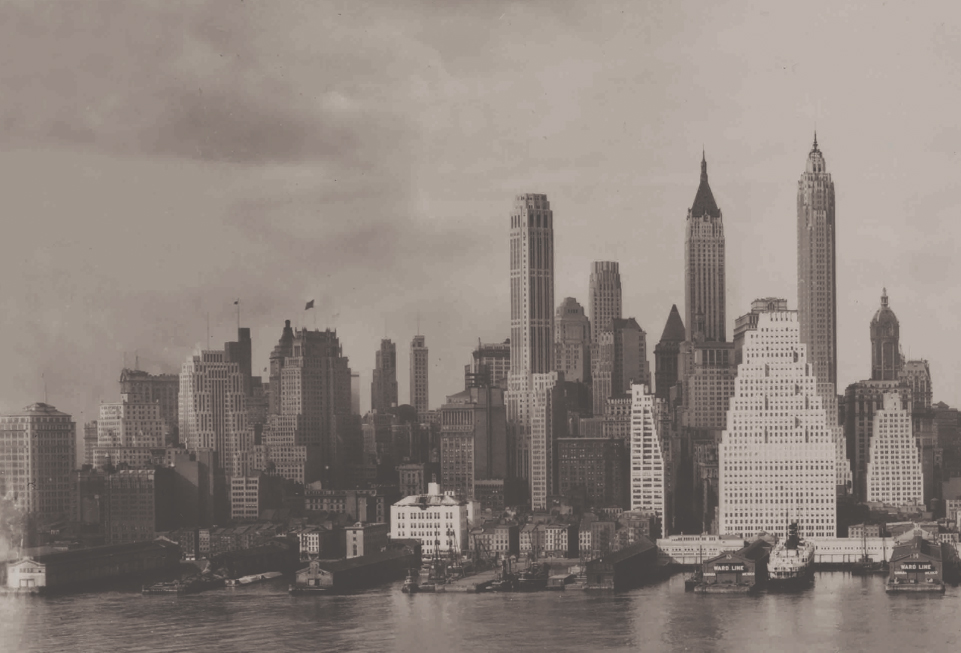
When you look at this picture, what do you see? A fun and easy way to understand the NYC skyline is to find all the shapes you know. In this picture, there are a lot of shapes! There are mostly rectangles, but see if you can find some triangles, or even a circle. We helped you get started by finding some shapes below. Can you find some we missed?
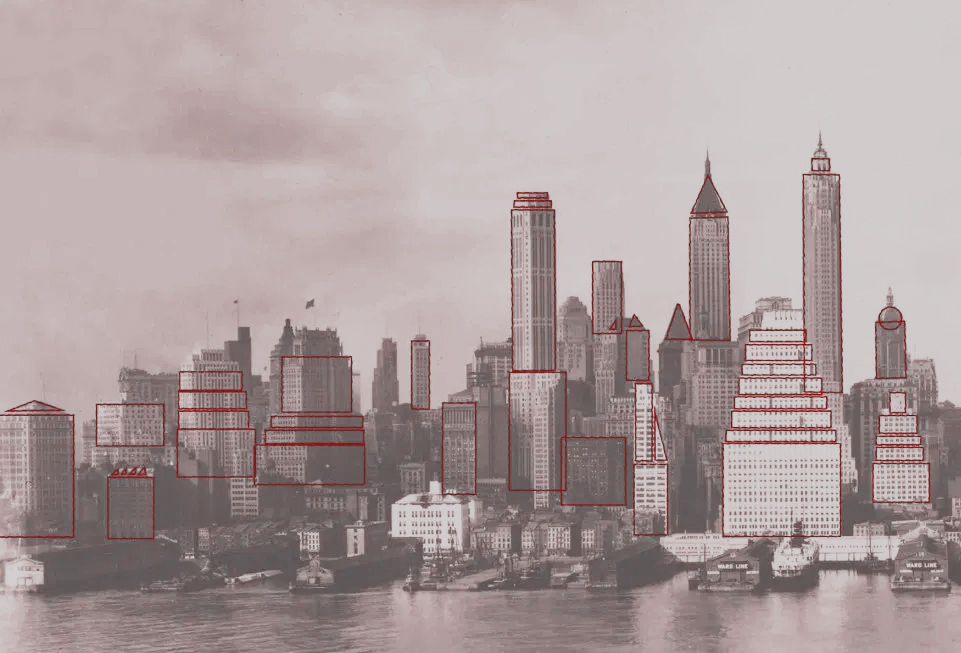
Now that you’ve found some more shapes here, it’s time to look at New York City’s skyline today and find more shapes! Though the 1920s skyline and the 2020 skyline look very different, what shapes look the same? What buildings are new to the 2020 skyline? What do you notice about the tops of the buildings in the 2020 skyline? What shapes do you see?
Exercise 4: Draw New York City’s Skyline Using Shapes
A skyline may seem like a complex scene. However, it is composed of a series of simple shapes. In this activity, we will use common shapes to curate our own skyline!
Materials:
Color paper of your choice
Scissors
Glue/Tape
Markers/crayons/colored pencils
Instructions
Print out our shapes template in a variety of colors of your choice. Keep one sheet for the skyline background.
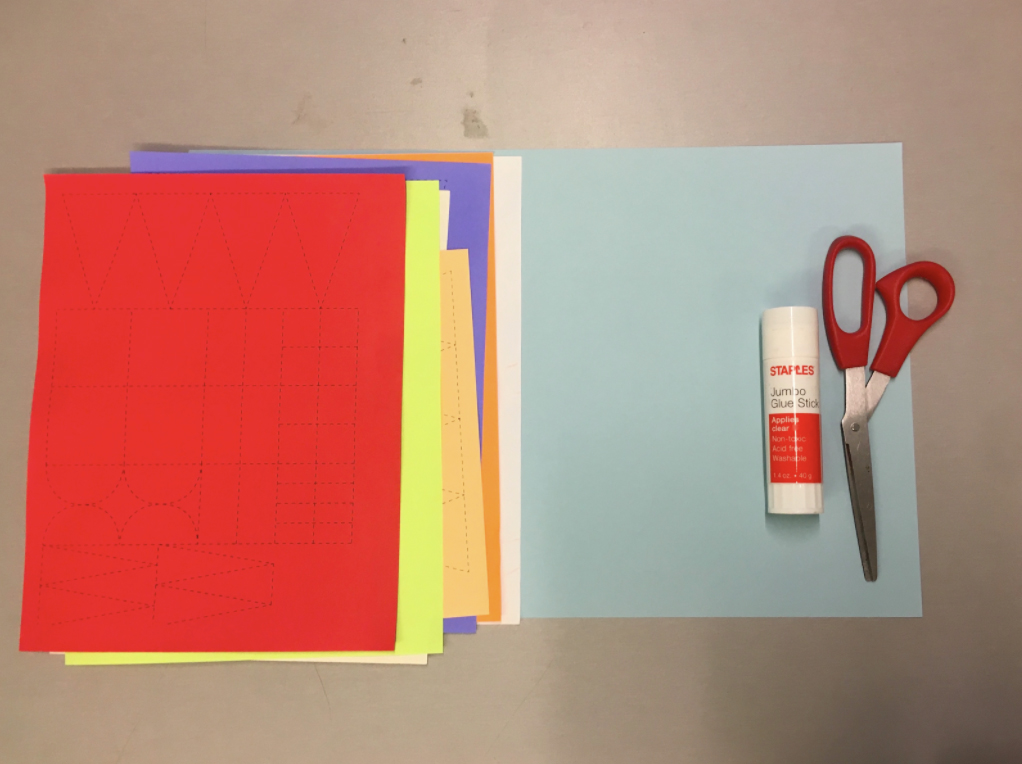
Cut out the different shapes and allocate them according to color for easier sorting.
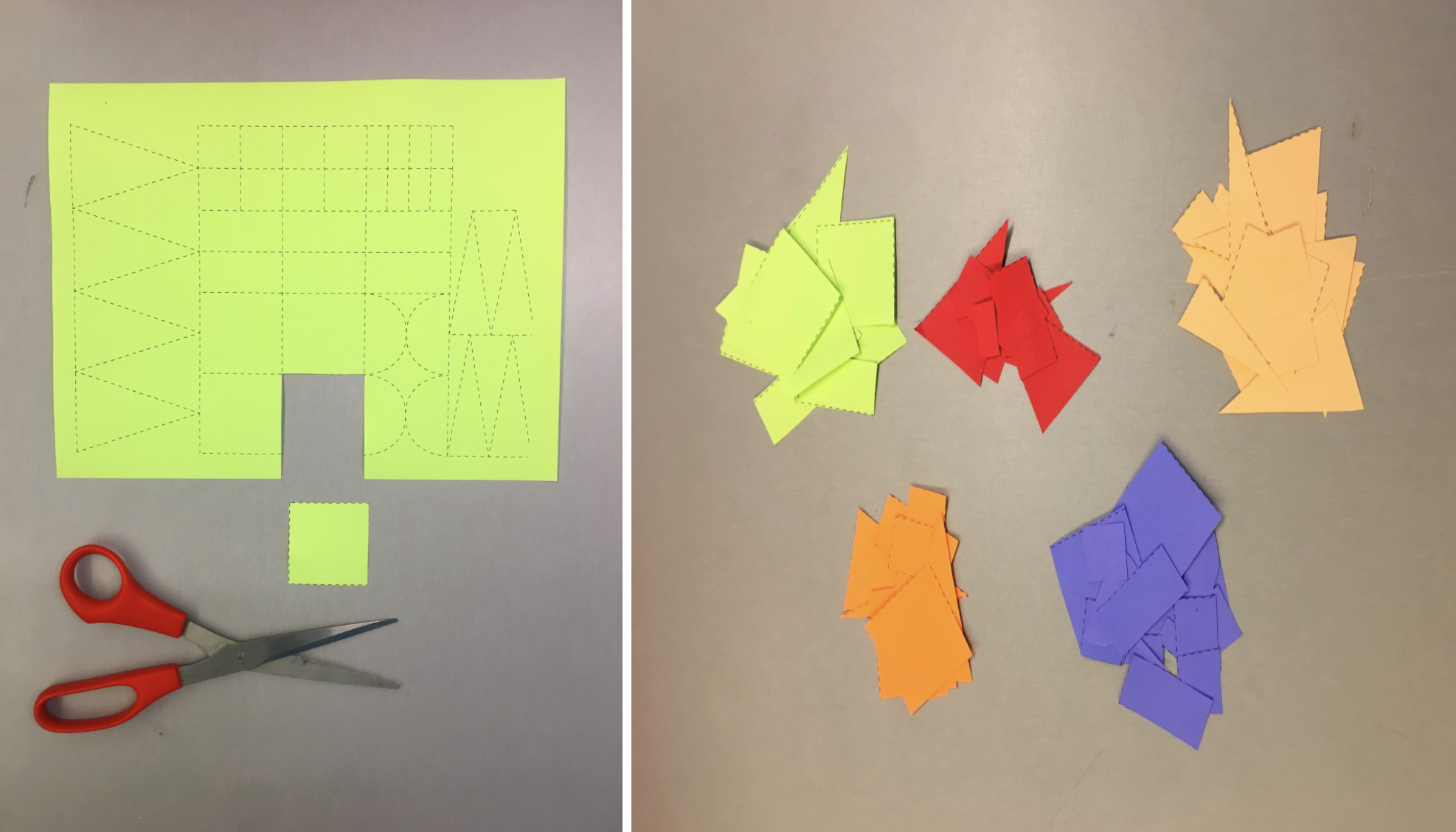
Arrange the shapes in varying tall building forms you know, like, or design. You can use one color overall or mix it up!
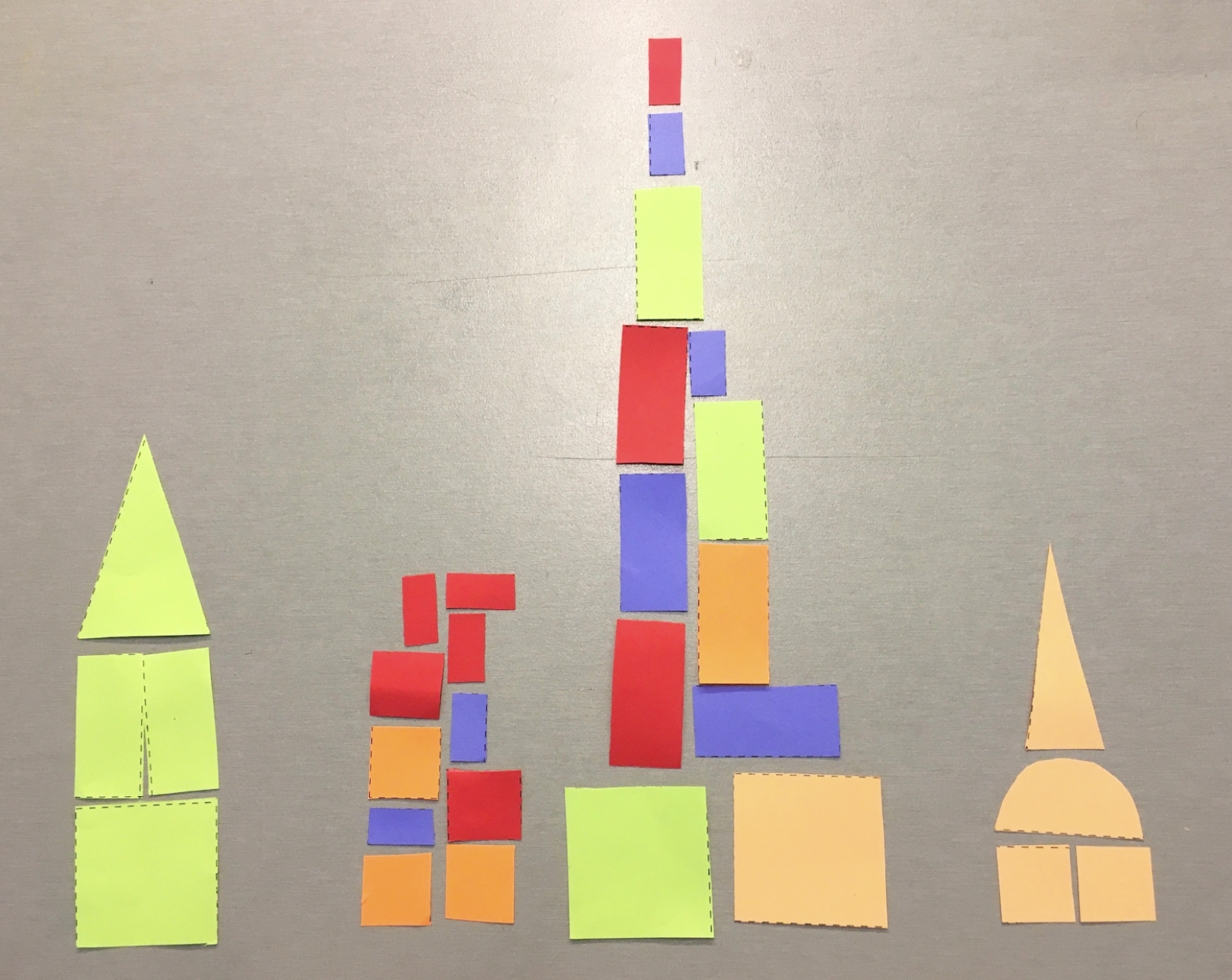
Once you like the arrangements, tape/glue them to the background paper. You can put skyscrapers side by side or layer them for depth to create your own unique skyline!
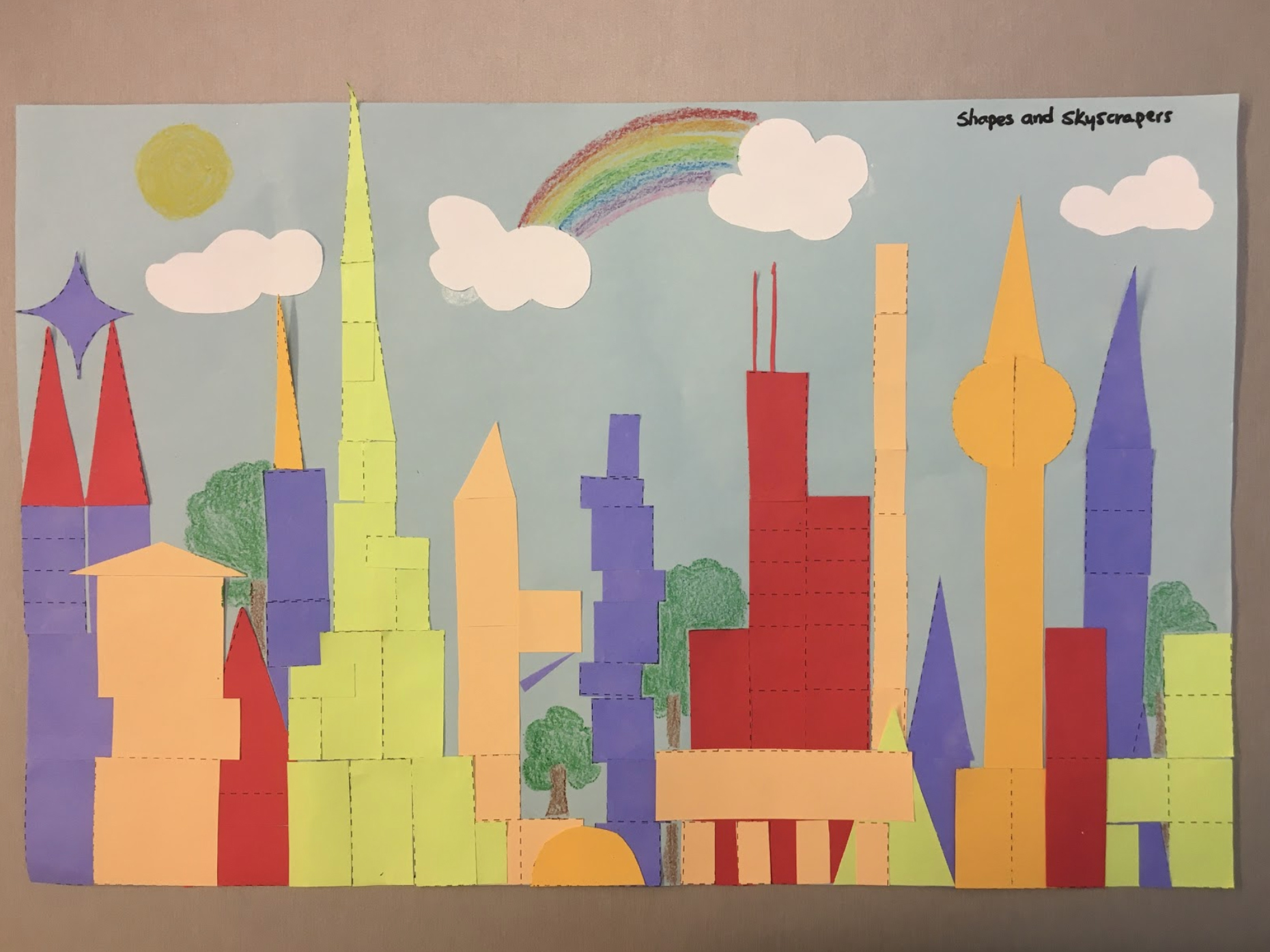
Now you can display your skyline against different backgrounds.
We would love to see your artwork. Once you finish, please share a photograph of your creation @skymuseum on Twitter and/or @skyscrapermuseum on Instagram!
